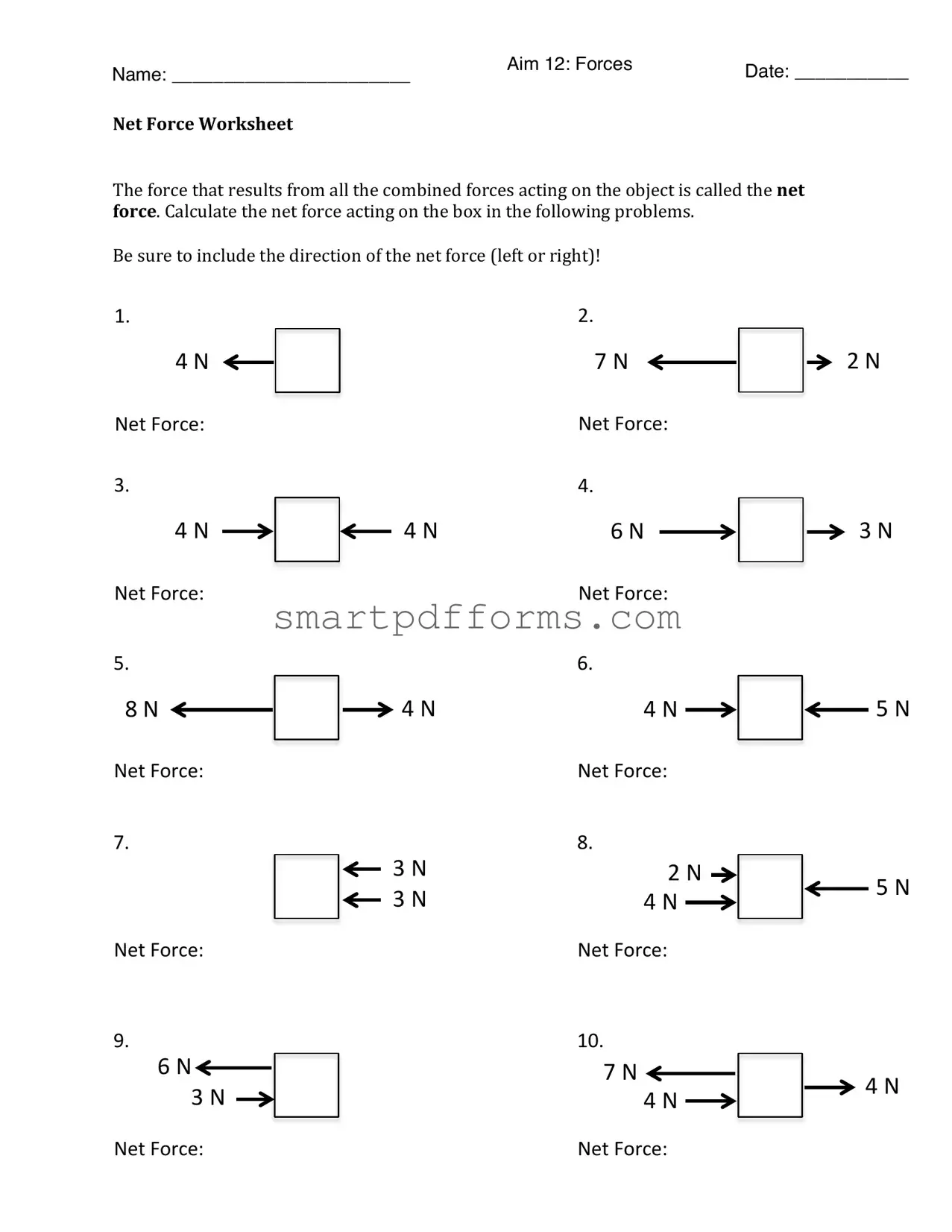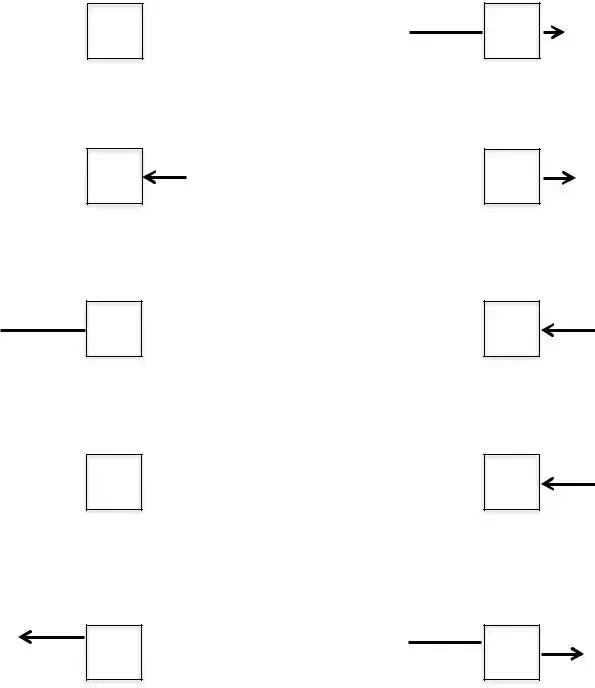NAME: _______________________ |
Aim 12: Forces |
DATE: ___________ |
|
Net$Force$Worksheet! |
|
|
|
!!!!!!! |
!!!! !!!! !!!! !!!! !!!! ! |
The!force!that!results!from!all!the!combined!forces!acting!on!the!object!is!called!the!net$ force.!Calculate!the!net!force!acting!on!the!box!in!the!following!problems.!!
!
Be!sure!to!include!the!direction!of!the!net!force!(left!or!right)!!
-A&
0&!& 
!$8&K+)7$%&&
/A&
0&!& 
!$8&K+)7$%&&
1A&
L&!&
!$8&K+)7$%&&
3A&
!$8&K+)7$%&&
MA&
2&!&
/&!& 
!$8&K+)7$%&&
.A&
3&!& 
!$8&K+)7$%&&
0A&
2&!& 
!$8&K+)7$%&&
2A&
0&!&
!$8&K+)7$%&&
LA&
.&!&  0&!&
0&!&
!$8&K+)7$%&&
-NA&
3&!& 0&!&
0&!&
!$8&K+)7$%&&
11. What!is!net!force?
Show$your$work$on$problems$12914$ *Draw a diagram for each scenario and solve*
12.A!boy!pulls!a!wagon!with!a!force!of!6!N!east!as!another!boy!pushes!it!with!a!force!of!4!N
east.!What!is!the!net!force?!
13.Mr.!Smith!and!his!wife!were!trying!to!move!their!new!chair.!Mr.!Smith!pulls!with!a!force
of!30!N!while!Mrs.!Smith!pushes!with!a!force!of!25!N!in!the!same!direction.!What!is!the!net!
force?!
14.The!classes!are!playing!tug!of!war.!Mrs.!Larson’s!homeroom!pulls!with!a!force!of!50!N.
Ms.!Mitko’s!homeroom!pulls!with!a!force!of!45!N!in!the!opposite!direction.!What!is!the!net!
force?!And!who!won?!
15.What!is!a!balanced!force?
16.What!is!an!unbalanced!force?
17.Draw!a!picture!below!that!shows!an!example!of!a!balanced!force!(examples:!a!bird’s nest!in!a!tree,!a!hat!on!a!person’s!head,!or!a!light!hanging!from!a!ceiling).!Show!the!forces! acting!on!the!object.!In!a!separate!picture!show!what!would!happen!to!the!object!if!the! forces!became!unbalanced.!






 0&!&
0&!& /&!&
/&!&  /&!&
/&!&


 0&!&
0&!&
 0&!&
0&!&